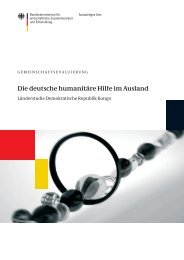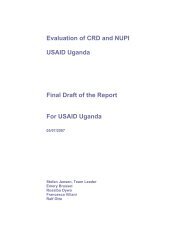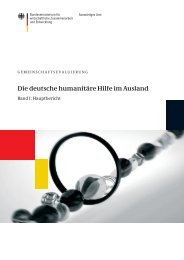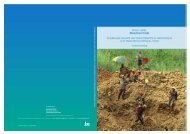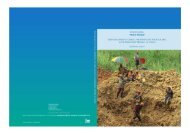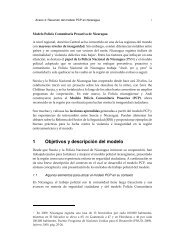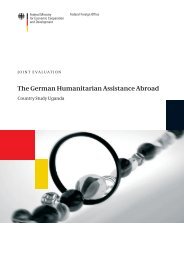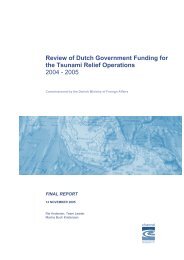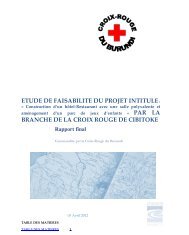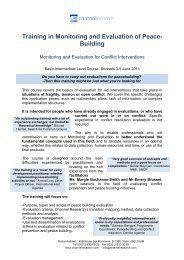A ripple in development? - Channel Research
A ripple in development? - Channel Research
A ripple in development? - Channel Research
Create successful ePaper yourself
Turn your PDF publications into a flip-book with our unique Google optimized e-Paper software.
2.2.1 Thematic questions<br />
A. The return of the state and civil society<br />
Thematic scope: This theme aims to capture the process and the outcomes<br />
of return to normally function<strong>in</strong>g government and community functions,<br />
which does not necessarily means a return to status quo ante. Also it<br />
shall cover the transitional nature of humanitarian agencies and NGOs<br />
and how they facilitate or disrupt return to a normal situation.<br />
a) To what extent have state and civil society <strong>in</strong>stitutions rega<strong>in</strong>ed their<br />
capacity to lead recovery, <strong>development</strong> and risk reduction?<br />
b) Have aid agencies transformed their roles from that of implementer<br />
to one of support and facilitation? What can be learned from this<br />
experience?<br />
c) To what extent has accurate <strong>in</strong>formation on reconstruction plans<br />
reached affected communities and has this provided the basis for<br />
genu<strong>in</strong>e decision-mak<strong>in</strong>g at local level? Have effective mechanisms<br />
been put <strong>in</strong>to place through which households can present concerns<br />
and compla<strong>in</strong>ts about aid programmes?<br />
d) What lessons can be drawn from comparison of the three very different<br />
experiences of Indonesia, Sri Lanka and Maldives with regard<br />
to decentralisation and subsidiarity?<br />
e) To what extent have aid <strong>in</strong>terventions effectively supported the restoration<br />
of public service <strong>in</strong>stitutions (<strong>in</strong>clud<strong>in</strong>g their human resource<br />
capacity where this was depleted)? Has assistance recognised limitations<br />
on susta<strong>in</strong>able public expenditure?<br />
f) To what extent has support to the reconstruction of <strong>in</strong>frastructure<br />
such as schools and health facilities been matched by appropriate<br />
attention to human resource and <strong>in</strong>stitutional constra<strong>in</strong>ts?<br />
g) How has the reconstruction effort addressed pre-tsunami deficiencies<br />
<strong>in</strong> basic services, <strong>in</strong>clud<strong>in</strong>g water and sanitation and solid waste<br />
management <strong>in</strong> particular?<br />
h) How do national and local state and civil society actors perceive the<br />
relevance and impact of the ‘capacity build<strong>in</strong>g’ efforts so far of the<br />
aid community? What say have they had <strong>in</strong> how this has been<br />
planned and implemented?<br />
i) Has the tsunami response become more related to the ‘harmonisation<br />
and alignment’ agenda agreed upon by donors <strong>in</strong> the Paris Declaration<br />
on Aid Effectiveness? How has the nature of the relationships<br />
between aid agencies and state and civil society <strong>in</strong>stitutions<br />
changed over time?<br />
129



